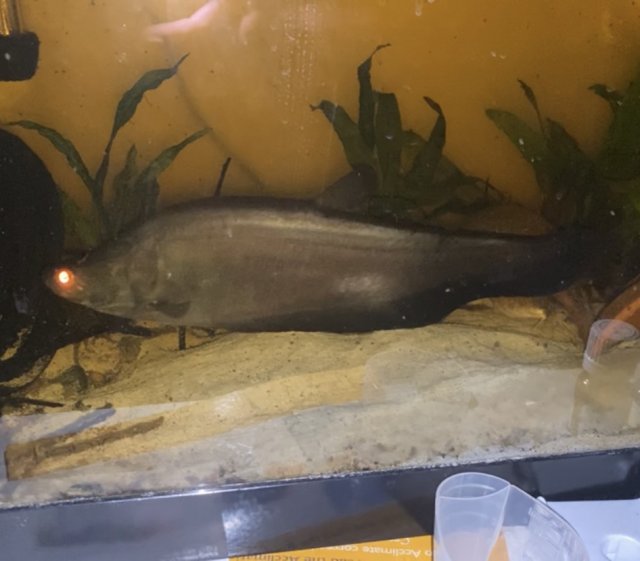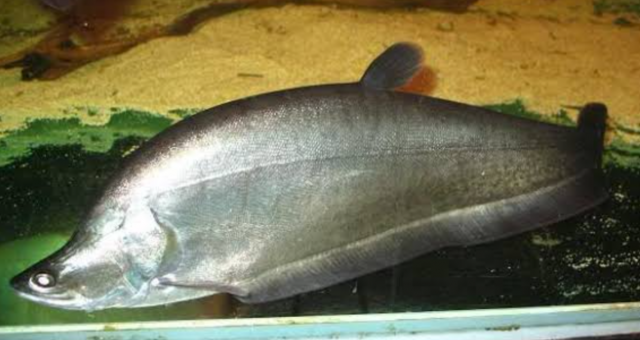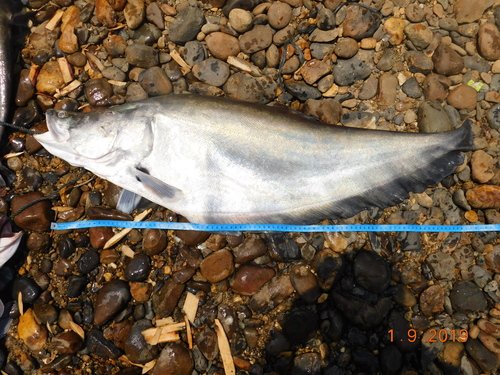I’ve been keeping this guy hidden for quite a while, I’m very familiar with its few extant relatives and have been confident in raising this guy. This fish is now considered by many (including IUCN ) to be extinct, but I have acquired a true specimen.
I randomly received a message one day from a buddy who had gotten some fish caught and imported out of Indonesia, asked if I wanted this oddball Chitala, was questioning whether it was Lopis but couldn’t get a proper ID over the phone. Paid the wholesale price (it came in labeled as simply “chitala”) and the high price to overnight ship it and it showed up the next day.
Spent hours keying it, looking through papers on lopis and the other spotless chitala relatives. Immediately ruled out ornata and blanci, then chitala chitala as it was lacking the stripes on its back and has the signature black spot under the pectoral fin. Was stuck with the 3 species left, the rarer chitala: borneensis, hypselonotus, and lopis.
I ruled out borneensis first, shockingly this was the hardest one to find info on. Eventually dug through iNaturalist and Facebook (of all places) and found an odd looking chitala with a strange speckled patterning (significantly different to that of blanci), labeled as borneensis. I took this and figured I do not have this species. Next hypselonotus. Hypselonotus if seen in tanks keep a very white coloring. True lopis in tanks are very dark and under certain lights have a beautiful purple and green hue (seen in video soon to be linked). This distinct coloring has caused me to rule out the last species.
I must say, this is the jewel of my collection, none of my other fish really compare to this specimen. It eats relatively light, mostly preferring live worms and crayfish, but I’ve recently gotten it on frozen. I would be extremely interested if others own this awesome fish. Considering very few must be left in the wild, some sort of effort to get the remaining few together would be incredible.
Video
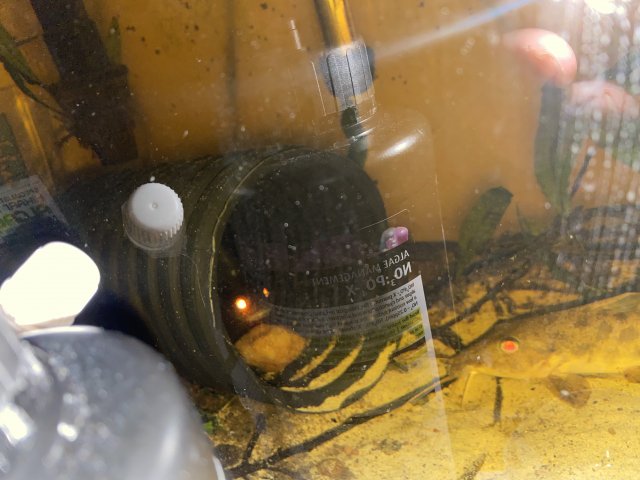
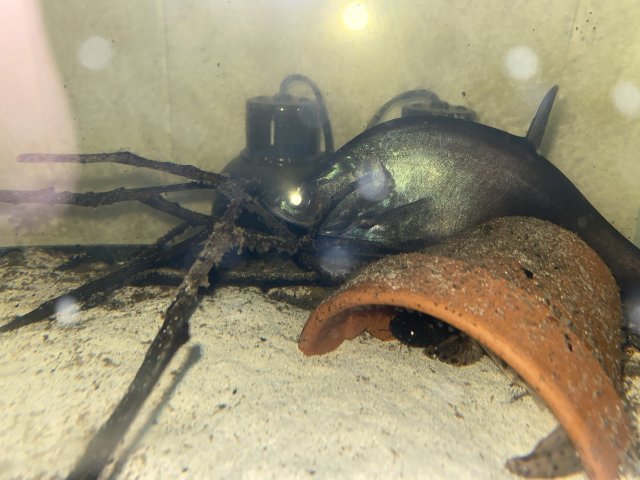
And I apologize for the terrible photo quality. This is one of the most shy fish I have ever kept and it is near impossible to photograph it. All of these photos and videos were taken in the moment when it happened to be out of its cave…
Overall, awesome fish.
I randomly received a message one day from a buddy who had gotten some fish caught and imported out of Indonesia, asked if I wanted this oddball Chitala, was questioning whether it was Lopis but couldn’t get a proper ID over the phone. Paid the wholesale price (it came in labeled as simply “chitala”) and the high price to overnight ship it and it showed up the next day.
Spent hours keying it, looking through papers on lopis and the other spotless chitala relatives. Immediately ruled out ornata and blanci, then chitala chitala as it was lacking the stripes on its back and has the signature black spot under the pectoral fin. Was stuck with the 3 species left, the rarer chitala: borneensis, hypselonotus, and lopis.
I ruled out borneensis first, shockingly this was the hardest one to find info on. Eventually dug through iNaturalist and Facebook (of all places) and found an odd looking chitala with a strange speckled patterning (significantly different to that of blanci), labeled as borneensis. I took this and figured I do not have this species. Next hypselonotus. Hypselonotus if seen in tanks keep a very white coloring. True lopis in tanks are very dark and under certain lights have a beautiful purple and green hue (seen in video soon to be linked). This distinct coloring has caused me to rule out the last species.
I must say, this is the jewel of my collection, none of my other fish really compare to this specimen. It eats relatively light, mostly preferring live worms and crayfish, but I’ve recently gotten it on frozen. I would be extremely interested if others own this awesome fish. Considering very few must be left in the wild, some sort of effort to get the remaining few together would be incredible.
Video


And I apologize for the terrible photo quality. This is one of the most shy fish I have ever kept and it is near impossible to photograph it. All of these photos and videos were taken in the moment when it happened to be out of its cave…
Overall, awesome fish.



